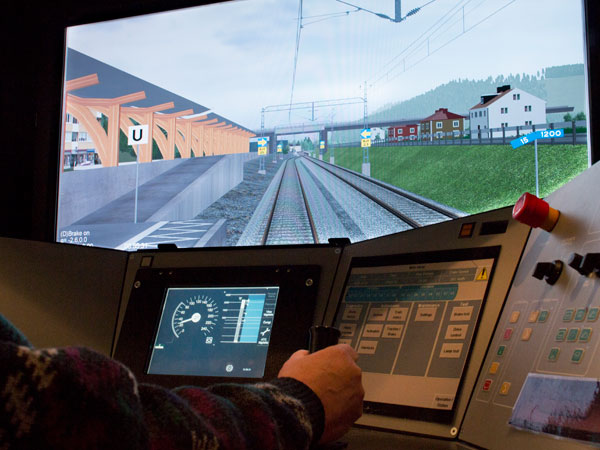VTI strives to increase research in the field of rail transport, and currently it has about twenty people working in this area. Together they represent a broad and deep competence base with an interdisciplinary approach. Peter Torstensson, acting Director of Research at VTI and a docent at Chalmers University of Technology, has been tasked with coordinating the research.
Early railway research
The various research and transport policy bills presented at the end of the 1980s laid the foundation for railway research at VTI. The institute’s breadth and competence in interdisciplinary projects, as well as its proximity to Linköping University, were considered to be valuable attributes. A special department for railway research was established in 1988, but some research had already been conducted in the area.
During VTI’s early research on rail transport, the institute was engaged in an extensive collaboration with SJ that brought together the entire railway industry. In that era, SJ was somewhat comparable to the present-day industry organisation Järnvägsbranschens samverkansforum (JBS) [Railway Industry Cooperation Forum]. Sofia Lundberg, Deputy Research Director at VTI, holds the secretarial function at JBS.
“When you look at railway research from a VTI perspective, you can see that there is a relationship between what we research today and what we did in the 1980s,” says Peter Torstensson. On the other hand, there have been major changes outside VTI. For example, in those days the Swedish Transport Administration did not yet exist and SJ was a significantly larger player in the area.

Train simulators
A prominent branch of VTI’s rail transport research is tied to train simulators. Problems with ride comfort on X2000 trains meant that the simulators were put into operation to study this issue. Over time, the areas of use have expanded, for example for use in training of train drivers.
“It’s possible trace the paths of our research, even if they often curve over time. The simulators are a good example; they were developed to study ride comfort (nausea) but are now an important tool for doing things like examining the interaction between train drivers and train dispatchers. It’s difficult to predict what the future applications might be,” says Peter Torstensson.
The future
Much of VTI’s early railway research is still recognisable today, but the environment and health research area is an example branch that has been added since the 1990s.
Investment measures in the railway area often have a long payback period, resulting in inertia in the system. Peter Torstensson believes that future changes will come gradually, and with them such benefits as reduced environmental and health impact and increased productivity.
“The aim is to achieve the transport policy objectives. That entails major challenges, but also great ambitions. Rail traffic need other complementary modes of transport. That’s why it’s good that research on rail transportation is among the activities of VTI, which studies such a wide range of modes of transport and is so interdisciplinary in its approach,” he concludes.
Text: Catharina Arvidsson/VTI
Translated by: Semantix AB

Contact:
Peter Torstensson
peter.torstensson@vti.se
VTI, Swedish National Road and Transport Research, Sweden






Follow us: